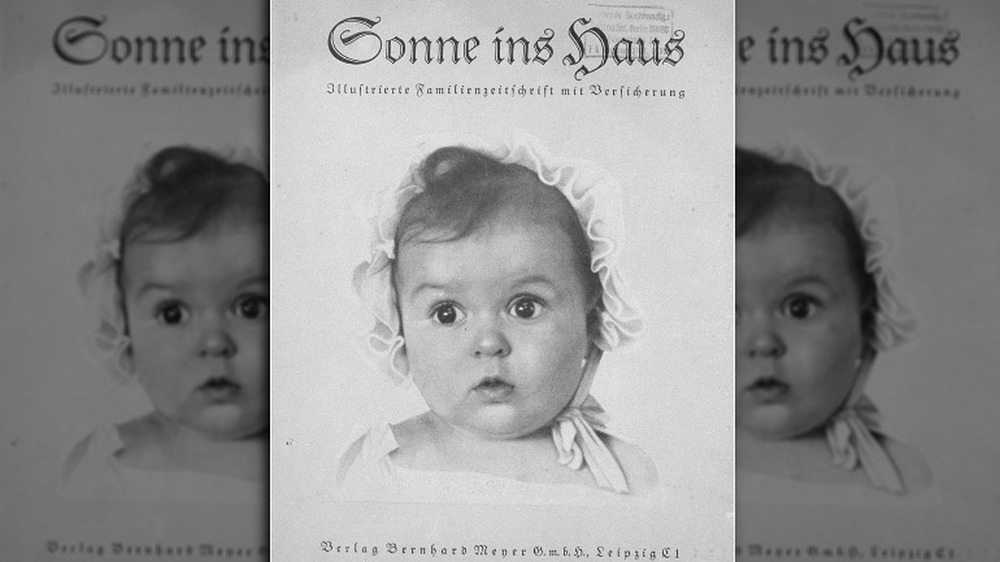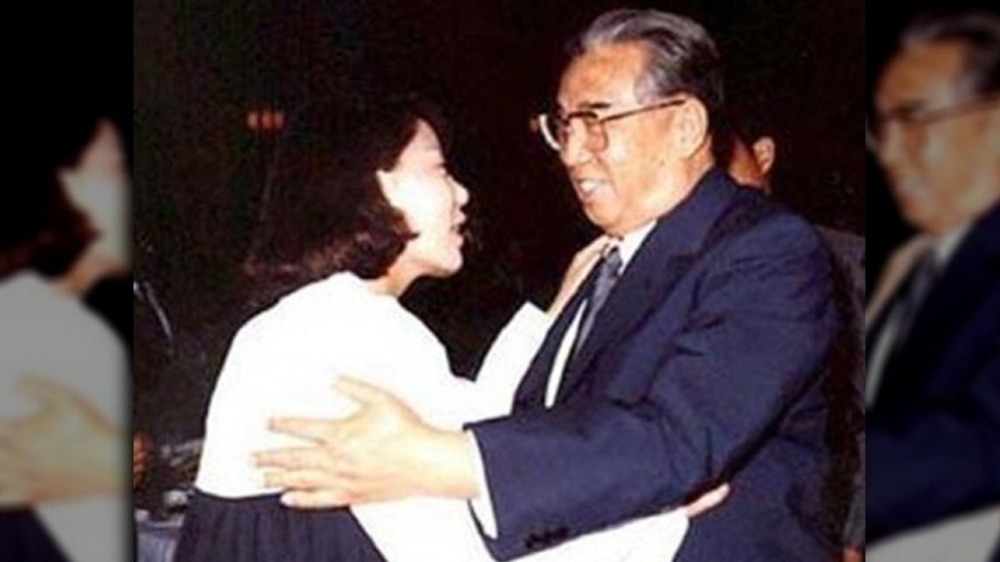Propaganda Campaigns That Backfired Spectacularly
We may receive a commission on purchases made from links.
Propaganda campaigns, when successful, can produce generations' worth of disinformation, hardships, and bloodshed that are monumentally tough to excise. Take the War Advertising Council's World War II propaganda campaign, outlined on The Conversation, where the U.S. government gave tax deductions to advertising agencies who generated pro-war ads. When the war was over, the council simply rebranded itself as the "Ad Council," and starting with the Truman administration, inculcated a Cold-War-era American public with ads analogizing free-market capitalism with moral rectitude, such as the "Freedom Train Campaign" and "The Miracle of America."
And now? "Socialism" = bad, and a cultural distaste for the term — and subsequent misunderstanding of its meaning — has led to a political avoidance of adopting healthcare systems like those in Norway, Switzerland, Canada, and others which outstrip the U.S. in every way, as the Commonwealth Fund depicts.
But when a propaganda campaign goes awry, it's hysterical, equal to the extent of the deception employed. A blundered campaign reveals the absurdity of its original propaganda (aided by a bit of historical hindsight or sociocultural distance, of course). In the "Information Age" alone, plenty of governments employ disinformation to manipulate their publics. The New York Times reports at least 70 governments worldwide currently messing with social media, influencing civil groups, puppeteering news organizations — a figure made possible, ironically, by the easy proliferation of information online.
So let's take a look at some of history's more facepalm-worthy — and thereby rendered harmless — propaganda campaigns.
The Nazi's 'perfect Aryan child' was Jewish
A big part of the Nazis' rise to power in the decades leading up to World War II was how they presented themselves to the public. During a time when the German economy suffered terribly due to the Wall Street of Crash of 1929 (and the subsequent start of the Great Depression), when wages fell 39 percent and those in full-time employment by nearly half (per The Wiener Holocaust Library), Hitler and his goons (Goebbels spearheaded the propaganda machine) had plenty of room to manipulate the public with visions of a stronger, unified Germany. Messaging through propaganda was a huge part of this, both pro-Nazi, such as their campaign targeting kids superimposed over Hitler's face, and anti-everything-else, such as the green-skinned, villainous-looking Jewish man on the poster for the Nazi-created film, Jud Süss, as DW Akademie chronicles.
But one campaign that backfired amazingly? The "perfect Aryan child" on the cover of the Nazi publication Sonne ins Haus, a swastika-and-slogan filled magazine that held creepy "beautiful Aryan children" contests, as the Washington Post explains. The parents of Hessy Levinsons Taft, Latvian Jewish immigrants, were shocked to see their 6-month old daughter on the front of the magazine in 1935. The photographer had submitted the photo without Hessy's parents' consent in a deliberate attempt to snub the Nazis, saying, "I wanted to allow myself the pleasure of this joke." It wasn't until 1990 that Hessy felt safe enough to come forward with her story.
North Korea's icon of South Korean oppression: a charismatic, beloved young woman
We all know that the citizens of North Korea — the Democratic People's Republic of Korea, or DPRK — are trapped in a dictatorship that constitutes one of the world's worst hotbeds of chronic human rights abuses. Amnesty International in 2019 reported that the North Korean government imposes "severe restrictions on freedom of movement and access to information" and "(w)idespread and systematic controls over the daily lives of people." Even simple makeup has to be smuggled into the DPRK, as this horrifying Refinery29 documentary on YouTube depicts. State propaganda has an unrelenting chokehold over access to information, and posters around the city of Pyongyang display Americans as literal bloodthirsty predators (although, as the BBC reported in 2018, the government may be changing its tune).
The DPRK's state-controlled media machine hasn't always been successful at brainwashing the public. Back in 1989, Kim Il Sung held the "13th World Festival of Youths and Students" to try and convince the world that his regime wasn't, you know, insane (footage is posted on YouTube). A political activist from South Korea, Lim Su-kyung, eventually dubbed the "Flower of Unification," jumped over the border to advocate just that: unification between north and south. Per NK News, she was apprehended and went on a hunger strike, and despite the DPRK's representation of South Koreans as oppressed under a Western regime, won the public over with sheer charisma and charm. She was eventually sent home, to the sound of nationwide applause.
Castro's film denouncing the U.S. receives critical U.S. praise
"Hasta la victoria siempre!" ("Always onward to victory!") goes Fidel Castro's slogan. Castro, who dominated Cuba for 57 years with what The Guardian aptly describes his "cult of personality," leveraged his image of perpetual revolutionary right up until his death in 2016. You've seen the pictures, placards, and posters everywhere: the green, flat-top hat; the long beard; the army fatigues; the victorious salutes — as if any of it could erase his nation's third-to-last ranking in terms of global economic freedom, per Heritage (#178 out of 180, DPRK being last), and #153 in terms of personal freedom, per the Legatum Prosperity Index. Such portrayals of character were Castro's hallmark, and an intentional attempt to inveigle the public.
Disparaging the U.S. was also part and parcel of Castro uplifting Cuba's image, and as American Cinematographer says, the 1964 movie Soy Cuba ("I Am Cuba") was intended to be a big part of that campaign. The film was a collaborative effort with the USSR, featuring Russian director Mikhail Kalatozov at the helm. It's split up into four vignettes meant to describe the final years of pre-Castro Cuba, full of fat, annoying U.S. tourists, and U.S. lechers harassing an innocent Cuban woman forced to turned sex worker by the nation's failing economy — that sort of thing.
A pure propaganda tool and "strictly a political film," it emerged in 1992 to thunderous American critical support. You can even rent it (depending where you live) on Amazon Prime today.
China fails to 'discredit' Apple through donation shaming
Decades after the supposed demise of "Red China," China has emerged as one of the world's most unrelenting manipulators of information and image. China Global Television Network has launched a worldwide disinformation campaign under the guise of "reporting the news from a Chinese perspective," as the The Guardian reports. Foreign workers are hired for this task, which addresses the rest of the world. Internally, Baidu, China's Google, forms one arm of the country's disinformation machine. A traveler even just passing through Shanghai or Beijing, for example, will find about half of their apps dead in the water: Facebook, Instagram, WhatsApp, as well as the entire Google Play store and many iOS downloads; companies are forced to partner with China-based operations before conducting business within the country, per the Verge.
Apple has been caught between U.S.-China tensions for years, as Wired explains. Back in 2013, they were part of a smear campaign on the part of the Chinese government to "discredit foreign firms and divert attention from other domestic problems," as Techonomy relates. Following a 7.0 magnitude earthquake in Sichuan province in April 2013, The People's Daily, official newspaper of the Communist Party, criticized Apple for its "arrogance" in not rendering aid quickly enough (in the form of about $8.2 million). Typically, after national disasters, Chinese companies fall over each other trying to provide relief, in order to boost their reputations.
Meanwhile, Apple reported record sales in China as recently as January, 2021, per Nikkei Asia.
Whoops: Argentinian soldiers are now terrified of Nepalese Gurkhas
Argentina saw its fair share of political upheaval in the 20th century, largely thanks to President Juan Domingo Perón, an authoritarian demagogue whose charismatic wife, Eve "Evita" Domingo Perón, helped keep him in power, per History. Perón was militarily deposed in 1955, as the BBC outlines, signaling decades of social and political upheaval.
The Falklands War in 1982 was a part of that tumultuous period. The Falklands — about 300 miles off Argentina's coast — were a British territory at the time, even though Argentina had laid claim to the island in 1820 after it won its independence from Spain, writes History. In March 1982, Argentinian soldiers were ordered to take the island, and also ordered to harm no British people there. Naturally, Great Britain's Prime Minister, Margaret Thatcher, retaliated with 30 warships. Part of the attack force? Gurkhas, an elite military cadre of Nepalese soldiers who undergo intensive training that's given them a long-standing reputation of being among the world's fiercest soldiers.
In response, the Argentinian government launched a propaganda campaign to try and mollify their troops' fear of Gurkhas. As 1997 book The Art of Military Deception by Mark Lloyd states, the government circulated absurd stories about the Gurkhas and their inhumanity in an attempt to undermine the Gurkhas' legitimacy. The whole thing backfired horribly, as the tales terrified the Argentinian soldiers to the point where conscripts simply surrendered even before beginning to fight.
A mythical Vietnamese war hero uncovered as a fraud
In 1964, President Lyndon Johnson's administration lied about Vietnamese attacks on the USS Maddox to pass the Gulf of Tonkin Resolution that allowed the U.S. to "protect U.S. forces" in Vietnam by invading the country to create another anti-communist bulwark in the Pacific, as All That's Interesting outlines. At the time, the leader of the north, Ho Chi Minh, was advancing on South Vietnam in an attempt to unify the country (he would eventually win and rename the southern capitol, Saigon, as Ho Chi Minh City, its current name). Ho's campaign pumped out so much propaganda, all of it now so well-known — often in the form of artwork — that you can even order reprints from the store Vietnamese Propaganda in Hanoi.
One piece of North Vietnamese propaganda wasn't printed, though: the legend of a mythical soldier, Nguyen Van Be, explained in detail on Psy Warrior. Be's exploits were woven into Ho Chi Minh's wartime narrative. In 1967 Be was called a "Victorious Hero," "U.S.-Destroying Hero," and "Anti-Tank Hero" in an article titled "Nguyen Van Be's Spirit will live forever!" in Hanoi-based newspaper Phu Loi. Reason being? Be died single-handedly destroying a tank, it was said, and saved lives. Songs were written about him. Statues were built of him.
The only problem? He didn't die a martyr. He didn't die at all, in fact. His cover was blown via hand-drawn leaflets, and Vietnamese confidence in Uncle Ho was shaken.






